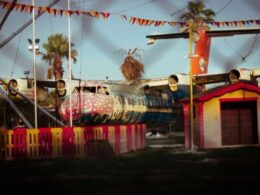St Helen’s Basilica in Birkirkara is one of the most imposing and iconic churches in Malta. Its baroque building, designed by Salvu Borg, dates to the 18th century, and has been the backdrop for thousands of christenings, marriages, funerals, feast day celebrations, and masses. Its history is long and, as the recently-opened museum testifies, peppered with beautiful objects.
The St Helen Museum is located in a new building above the church’s Aula Capitularis, which is the Chapter Hall where cannons deliberated matters related to the College.
The permanent exhibition, made up of hundreds of objects, is split into four themes: the Collegiate, which was founded in 1630; the processional statue of St Helen, which dates to the 1830s; the Big Bell Helena, which weighs 7.8 metric tonnes and was installed in the 1930s; and, of course, the Basilica itself, which started functioning as a church in 1745.
The artefacts that tell these stories are numerous. There are church vestments from the 19th century woven in red silk and velvet, chasubles, capes, dalmatics, and even a tabernacle cover believed to date to the 18th century. There is church silver and jewellery; plenty of examples of locally-made examples of ganutell; dozens of paintings, including by local artists like Giuseppe D’Arena and Stefano Erardi; wooden artefacts; and stone sculpture.
Perhaps, however, the most impressive collection here is that of altar antependias, made from silver, gilt-wood, and even textiles. Currently, the museum is open by appointment to groups against a donation of just €2 per person. Nevertheless, the volunteers who look after the museum are working on opening it more frequently, and suggest following their Facebook page, Ħbieb tat-Tempju Elenjan, to stay updated.










